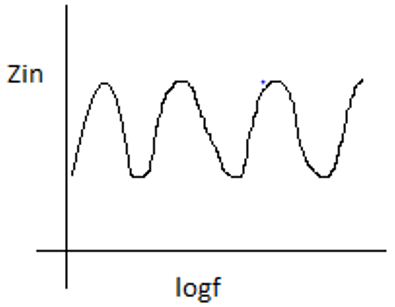This set of Antennas Multiple Choice Questions & Answers (MCQs) focuses on “Frequency Independent Antenna – Log Periodic Antenna”.
1. Which of the following is a narrow band antenna?
a) Rhombic antenna
b) Yagi-Uda antenna
c) Log periodic antenna
d) Horn antenna
View Answer
Explanation: Yagi-Uda antenna is a narrow band antenna. Rhombic, Log periodic and horn are wide band antennas. More number of channels is used in the Log periodic antenna compared to the Yagi-Uda in TV reception.
2. Log periodic antenna uses which range of frequencies?
a) VHF and UHF
b) VHF and SHF
c) MF and VHF
d) HF and VHF
View Answer
Explanation: Log periodic antenna uses around 30MHz to 3GHz frequency range.
MF – Medium Frequency – 300-3000 KHz
HF – High Frequency – 3-30 MHz
VHF – Very high frequency – 30-300 MHz
UHF – Ultra high frequency – 300MHz to 3GHz
So it uses VHF and UHF.
3. Log periodic antenna is frequency dependent.
a) True
b) False
View Answer
Explanation: Log periodic antenna is frequency independent. The geometrical structure of the antenna changes according to the wavelength. It is also called as Frequency Independent antenna. Its electrical performance is dependent on logarithmic of frequency only.
4. Which of the following antenna is known as Frequency Independent antenna?
a) LPDA
b) Dipole antenna
c) Rhombic antenna
d) Yagi-Uda antenna
View Answer
Explanation: LPDA means Log periodic Dipole Array antenna. It’s all characteristics such as impedance, radiation pattern are frequency independent. So it is also called as Frequency independent antenna.
5. What is the approximate gain of LPDA for best performance?
a) 1 dB to 5 dB
b) 4 dB to 18 dB
c) 8 dB to 20 dB
d) 7 dB to 12 dB
View Answer
Explanation: For best performance of the LPDA antenna, the gain lies between 7 to 12dB. It is a broadband antenna. LPDA is a wideband antenna and provides gain and directivity combined over a wide band of frequencies.
6. In order to get more number of channels in TV reception, we prefer Yagi-Uda than LPDA.
a) True
b) False
View Answer
Explanation: LPDA is a broadband antenna while Yagi-Uda is a narrow band antenna. To increase the more number of channels for TV reception we prefer LPDA. It is also used for long distance communication.
7. Which of the following statements is false?
a) Log periodic antenna is a broadband antenna
b) The active region doesn’t change with the change in frequency in Log Periodic antenna
c) The geometry structure of the dipole changes proportional to the wavelength in LPDA
d) Impedance is function of logarithmic of frequency
View Answer
Explanation: In Log period antenna, the active region changes with the change in frequency. There are three regions of operation in the LPDA.Impedance is function of logarithmic of frequency in LP so it is called log periodic antenna.
8. Which of the following best suits to describe the impedance of a log periodic antenna?
a) It is function of anti-logarithmic of frequency
b) It is dependent on frequency directly
c) It is a function of logarithmic of inverse frequency
d) It is a function of logarithmic of frequency
View Answer
Explanation: Impedance is function of logarithmic of frequency. So it is called log periodic antenna. Both the impedance and standing wave ratio are functions of logarithmic of frequency.

9. The geometrical design of the Log periodic depends on _____
a) Scaling factor
b) Gain
c) Impedance
d) Stability
View Answer
Explanation: Scaling factor is the ratio of the lengths and spacing’s of the dipoles. It is also called as periodicity factor. If rn denotes the length of the nth dipole then the scaling factor is given by
Scaling factor = \(\frac{r_n}{r_{n+1}}\)
Sanfoundry Global Education & Learning Series – Antennas.
To practice all areas of Antennas, here is complete set of 1000+ Multiple Choice Questions and Answers.
If you find a mistake in question / option / answer, kindly take a screenshot and email to [email protected]
